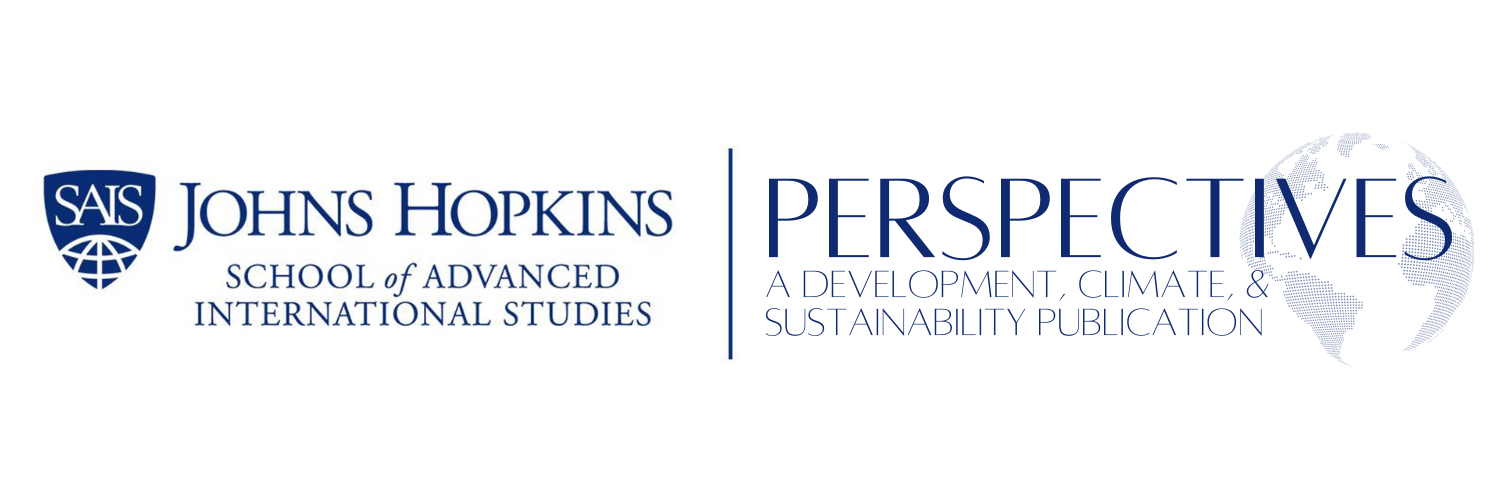BY SHERAN MUNASINGHE
Sheran Munasinghe is a second-year Energy, Resources and Environment Student and Senior Editor at SAIS Perspectives
Perspectives: Where did you intern this summer?
SM: This summer, I interned at European Energy A/S, a leading renewable energy company based in Copenhagen, Denmark. It builds, develops, and operates wind, solar parks as well as power-to-X plants. My focus area was Brazil, but the company manages projects from Europe to the United States of America.
European Energy is strongly committed to addressing climate change, and it aims at a 100 percent renewable energy future. It does so by advancing the United Nations Sustainable Development Goals (SDGs) in the areas it operates, embracing all the dimensions of The Agenda 2030 for Sustainable Development. More recently, European Energy has gotten in the news for its partnership with Maersk – the world’s largest shipping company. This collaboration is expected to start in 2023, and through that European Energy will provide green e-methanol to Maersk vessels. This is the first time that e-methanol will be used as a fuel for vessels, opening the door to a low-carbon future in an extremely hard-to-decarbonize sector.
Perspectives: How did you find this internship, and what was the hiring process?
SM: I found this internship opportunity through SAIS Europe Career Services. My supervisor and Senior Transaction Manager at European Energy, Marcos Szutan, was my main point of contact during the process. I only had to submit my cover letter and resume for the application. Luckily, my profile was compatible with what the company was looking for. And I was invited for an interview with Marcos a few days after.
I had the chance to have my interview in person (which feels almost impossible during these COVID times), where I could elaborate on my skills, experience, and interest in the renewable energy space – specifically, green hydrogen. The day after, I received my internship offer.
Perspectives: What were your primary responsibilities? Please describe the projects you worked on.
SM: I worked on a single project which focused on the analysis of the potential development of an e-methanol project in Brazil. For those of you who are not familiar with this green fuel, e-methanol is produced through the combination of captured biogenic carbon dioxide with renewable hydrogen. It is a fuel that could help decarbonize the maritime, chemical, and road transport industries.
More specifically, I focused on an economic, market, and regulatory analysis that emphasized the benefits of establishing an e-methanol supply chain. During the summer I produced a report that indicates the optimal solutions for e-methanol production in Brazil, supported by a financial model and relevant recommendations.
Lastly, I had the privilege to present the results of my studies to the senior management team of European Energy.
Perspectives: Was there previous coursework or work experience that you found especially useful during the internship or the application process?
SM: The “Renewables: The Challenges of Transitioning from Marginal to Mainstream Source of Energy” class with Professor Marco Dell’ Aquila has been instrumental for my career ambitions and my internship success. The class introduces you to a multi-disciplinary approach to renewable energy: technology, regulatory systems, fiscal incentives, and project finance. During my internship, I applied the tools and knowledge that the class provided me with. Knowing how to perform an economic, market, and regulatory analysis and build a spreadsheet model have been crucial in my day-to-day work. I recommend this course if you want to be exposed to a private sector perspective on renewable energy.
Perspectives: What were some of your key takeaways from this internship for your academic and professional interests?
SM: I have learned two main lessons from this internship.
Firstly, I probably should be more optimistic about a 100 percent renewable future. Through my experience at European Energy, I could see first-hand the rapid developments in the industry. Cost and scale are the two main obstacles for a 100 percent energy system. But to my surprise, in the two months I spent at the company, I was able to see the scale of announcements and relative fall in costs compared to the data I gathered for my analysis. I am now back at SAIS more confident about the role that power-to-X will play in decarbonization, and more broadly the extent to which renewable energy sources will be able to penetrate global energy systems.
Secondly, green hydrogen and its related products, such as e-methanol, are essential to understand and harness to achieve decarbonization. These advances are often overlooked or superficially addressed, but here at SAIS I have had the opportunity to delve into the details of green hydrogen through my consulting capstone project where I am currently performing a market and business study for a green hydrogen developer. After graduating from SAIS, I hope to make my contribution towards the advancement of green hydrogen and power-to-X in energy systems.
PHOTO CREDIT: "The Night Lights of Europe (as seen from space)" by woodleywonderworks is licensed under CC BY 2.0

